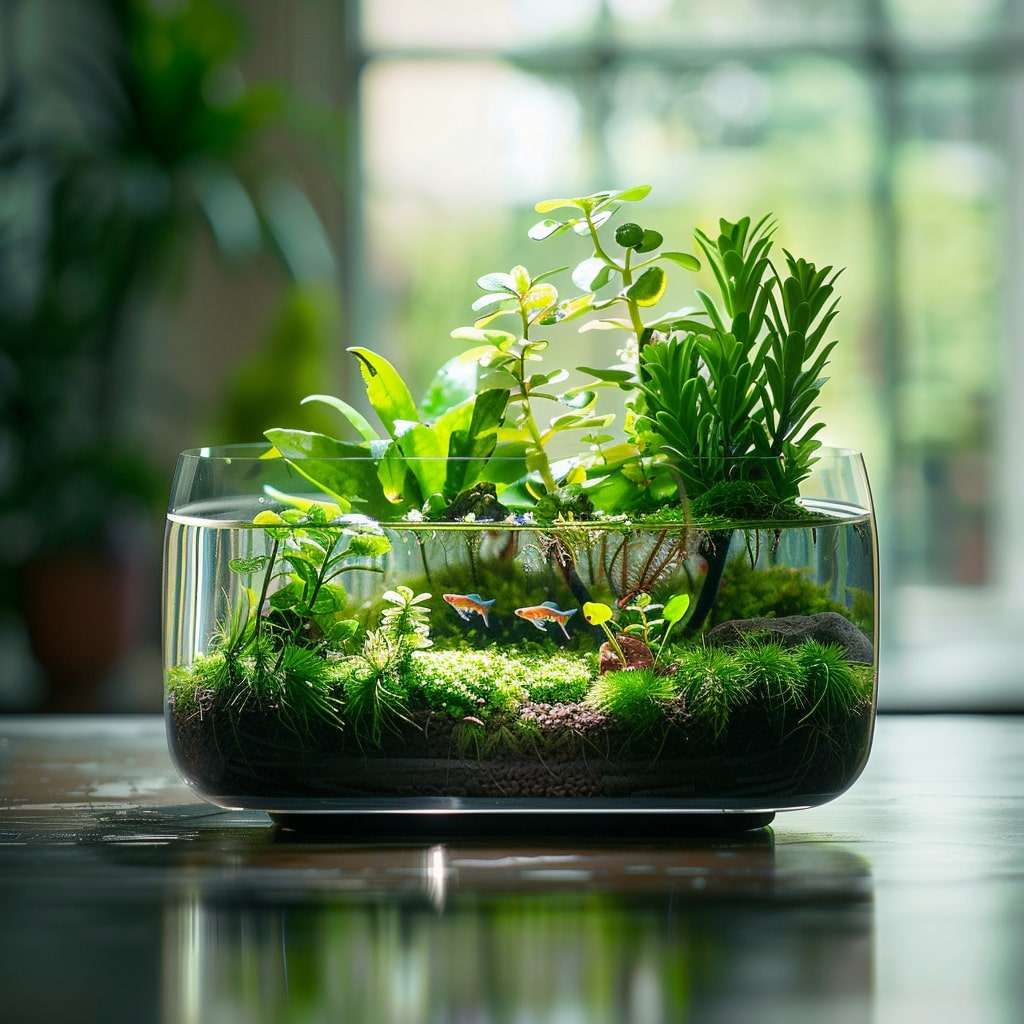Creating a stunning planted aquarium is an art form that allows aquarists to express their creativity while providing a natural and beautiful habitat for aquatic life. Whether you’re a beginner or an experienced hobbyist, there are various styles to explore. Let’s dive into 10 of the most captivating planted aquarium styles:
Nature Aquarium Style


Description: The Nature Aquarium style, pioneered by Takashi Amano, aims to replicate natural landscapes underwater, often featuring meticulously arranged rocks, driftwood, and carefully selected plant species.
Difficulty: Moderate to High
Guide: To create a Nature Aquarium, start by selecting suitable hardscape materials and planting species that thrive in your chosen layout. Pay attention to proportion, balance, and plant health maintenance.
Dutch Aquarium Style

Description: Originating from the Netherlands, the Dutch style is characterized by lush, densely planted tanks with vibrant colors and a variety of plant species.
Difficulty: High
Guide: Achieving the Dutch style requires meticulous planning, strict pruning, and nutrient management. Use a variety of plant species and layer them according to height for a dynamic appearance.
Iwagumi Style

Description: Characterized by simplicity and minimalism, the Iwagumi style typically features a composition of rocks arranged according to specific principles, such as the “rule of thirds.”
Difficulty: Moderate to High
Guide: To create an Iwagumi layout, select a focal point rock (the “seki”), arrange secondary rocks around it, and use only a few select plant species, usually grass-like or carpeting plants, to complement the stone layout.
Jungle Style


Description: Mimicking the untamed look of a dense forest floor, the jungle style involves planting a wide variety of plants with little regard for strict layout or pruning.
Difficulty: Low to Moderate
Guide: To achieve the jungle style, densely plant a variety of species with different leaf shapes, sizes, and colors. Regular trimming may be necessary to prevent overcrowding and maintain plant health.
Biotope Aquarium

Description: Biotope aquariums replicate specific natural habitats, including the plants, fish, and other aquatic life found in a particular geographic region.
Difficulty: Moderate to High
Guide: Research the natural habitat you want to replicate and select plant and fish species accordingly. Pay attention to water parameters, substrate, and decorations to mimic the environment accurately.
Wabi-Kusa Style


Description: Originating from Japan, Wabi-Kusa involves creating small, self-sustaining ecosystems in shallow containers rather than traditional aquariums.
Difficulty: Low to Moderate
Guide: Arrange a variety of aquatic and semi-aquatic plants on a substrate of soil or aquatic plant media in a shallow container. Keep the setup moist and provide adequate lighting to encourage plant growth.
Paludarium


Description: Combining elements of both aquariums and terrariums, paludariums feature a combination of underwater and above-water landscapes.
Difficulty: Moderate to High
Guide: Design the setup to include both aquatic and terrestrial plants, as well as appropriate habitat areas for aquatic and land-dwelling creatures. Maintain proper humidity levels and lighting for plant growth.
Biotopic Style


Description: Similar to the biotope aquarium, the biotopic style focuses on replicating a specific natural habitat but with more emphasis on the overall aesthetic appeal rather than strict accuracy.
Difficulty: Moderate
Guide: Research the ecosystem you want to recreate and select plant and decor elements that capture its essence. Incorporate artistic liberties while staying true to the general habitat structure and plant species.
Aquascaping with Hardscape

Description: This style emphasizes the use of hardscape elements such as rocks and driftwood to create visually striking aquascapes.
Difficulty: Moderate to High
Guide: Experiment with different hardscape materials and arrangements to create visually appealing layouts. Use plants to complement and soften the appearance of the hardscape elements.
Nano Aquariums


Description: Nano tanks are small-scale aquariums typically ranging from a few gallons to around 10 gallons in size.
Difficulty: Low to Moderate
Guide: Due to their limited space, nano aquariums require careful selection of plants and hardscape elements. Choose small, slow-growing plants and minimalist hardscape arrangements to create visually appealing layouts in a small space.
Conclusion
Exploring different planted aquarium styles offers endless possibilities for creating breathtaking underwater landscapes. Whether you prefer the simplicity of the Iwagumi style or the lushness of the Dutch style, there’s a style to suit every aquarist’s taste and skill level. Remember to research each style thoroughly, experiment with different layouts and plant species, and most importantly, enjoy the journey of creating your own stunning planted aquarium!







